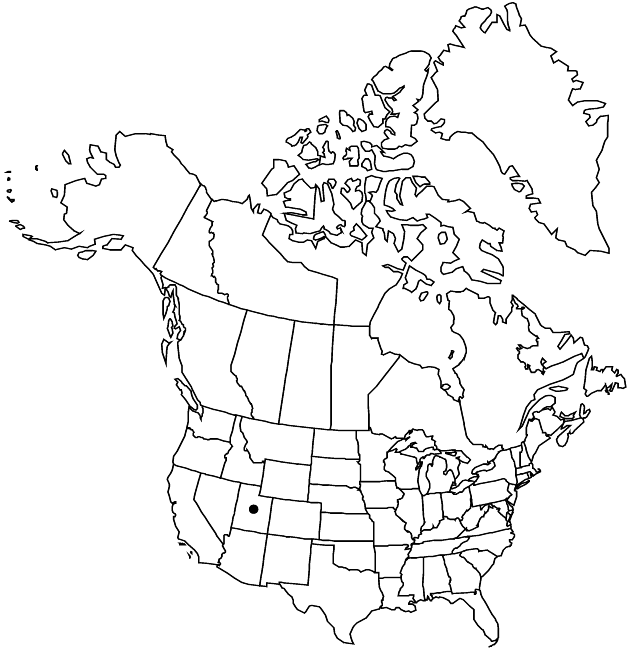Erigeron canaani
Great Basin Naturalist 43: 366. 1983.
Perennials, (5–)10–25(–30) cm; taprooted, caudices simple or branched. Stems ascending to decumbent or nearly prostrate, sparsely strigose to glabrate, eglandular. Leaves basal (persistent, old leaf bases persistent, chaffy, fibrous) and cauline; basal blades linear to narrowly linear-oblanceolate, 50–150 × 1–2(–3) mm, cauline gradually or abruptly reduced distally, margins entire, faces glabrate to sparsely strigose, eglandular. Heads 1(–3). Involucres 5–7 × 10–13 mm. Phyllaries in 2–3(–4) series, hirsute, minutely glandular. Ray florets 15–22; corollas white to purplish, 3.5–6 mm, laminae not coiling or reflexing. Disc corollas 3.5–5 mm. Cypselae 1.8–2.2 mm, 2-nerved, faces sparsely strigose; pappi: outer of setae, inner of ca. 20 bristles.
Phenology: Flowering Apr–Jun(–Jul).
Habitat: Crevices of sandstone cliffs and in sandy soil, ponderosa pine, Gambel oak, maple, Douglas fir, mixed conifers
Elevation: 1600–2600 m
Distribution

Utah.
Discussion
Erigeron higginsii may prove to be a distinct entity. It was described as differing from E. canaani in having smaller involucres (4.5–5.5 × 7.5–11 mm) with fewer rays (7–12); it occurs at 2900–3120 m in the Pine Valley Mountains of southwestern Utah.
Selected References
None.